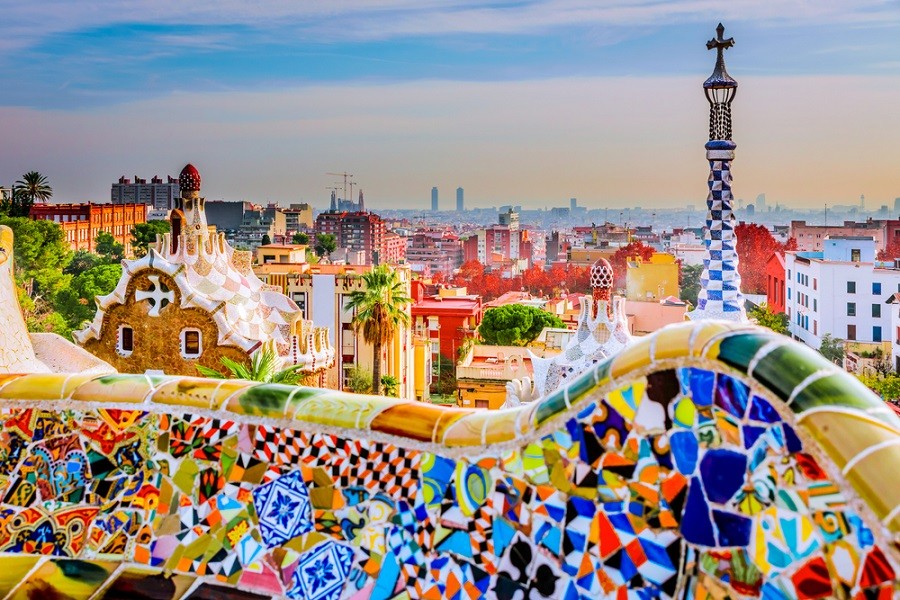Popular Reads
Top Results
Can't find what you're looking for?
View all search resultsPopular Reads
Top Results
Can't find what you're looking for?
View all search resultsWhere to go, what to do in Barcelona if you only have one day
There is much to see and do in Barcelona. But if you only have a day to spare, here are some things to look out for.
Change text size
Gift Premium Articles
to Anyone
W
hen people think of Barcelona, they might think of football. But don’t confuse it with Barcelona FC, or Barca, as it is popularly known, a professional football club based in Barcelona.
The city has a rich history and cultural heritage, and offers many tourist attractions. Barcelona is also known for hosting the 1992 Summer Olympics and other international sport tournaments.
It is a transport hub, too, being one of Europe’s main seaports and busiest passenger ports. Its international airport serves over 40 million passengers yearly, while its high-speed rail line links to the rest of Europe.
There is much to see and do in the city that you’d need more than a day to try and fit everything in your schedule. But, if you only have a day to spare, here are some things to look out for.
Read also: Spain surpassed US as tourism destination in 2017: Rajoy
1. Sagrada Familia and Casa Battlo
These two architectural wonders are the works of well-known Spanish architect Antoni Gaudi.
Sagrada Familia is one of the most visited cathedrals in Barcelona. The huge Roman Catholic cathedral, which is still not complete to this day, is said to be an Art Nouveau interpretation of the Gothic style. It is also a Unesco World Heritage Site.
Another masterpiece of the architect known for his Modernisme style is Casa Battlo. This very unique building is also known as “House of Bones” (Casa del ossos) in the local language because it has some resemblance to the visceral and skeletal system.
Other unique historical buildings to check out if you have more time, include Lluis Domenech i Montaner’s Hospital de Sant Pau and Palau de la Musica Catalana, which are also Unesco World Heritage Sites. You might also want to take a walk around Barri Gotic or the Gothic Quarter.
2. Local markets
There’s nothing like seeing a city through its markets. Mercat de la Boqueria, in El Raval neighbourhood, is part and parcel of local life in Barcelona. It is the most well-known market in the area. You can easily spend hours exploring the market which sells cured meats, cheeses, vegetables, spices, chocolates and more.
This is also the perfect place to pause for a bite if you’re hungry. You can either eat on the go, or take a seat at the countertop of one of the many stalls. From fresh oysters, sea urchins and cooked seafood, to cured meats, wine and sandwiches, it is a paradise for foodies and non-foodies alike.
Another interesting market to check out, if you have more time, is Mercadillo de la Placa de Sant Josep, the art market. Unlike the Mercat de la Boqueria which is housed in its own building, the art market is an open-air one. It is a weekend market, open on Saturdays and Sundays.
Read also: High speed rail now rivals air travel on key Asia, Europe routes
3. Tapas and paella
For lunch or dinner, you might want to try some local food at a neighbourhood restaurant.
Tapas, which means “cover or top” are small appetisers or snacks, which can be either hot or cold dishes. It is said that this Spanish style of food evolved from the slices of bread or meat that drinkers in Andalusian pubs used to cover their sherry glasses. This was to prevent fruit flies from getting into the sweet sherry.
The meat usually used was ham or chorizo, which is salty and made the drinker thirsty. As a result, bartenders sold more drinks, and they started to create more snacks to serve with the sherry.
Through the course of Spanish history, tapas have evolved to incorporate ingredients like olives, tomatoes, peppers, potatoes, cheese, and seafood.
Paella is a rice dish which originated in Valencia, Spain. Believe it or not, there are many types of paella (which refers to the huge pan it’s cooked in), which include seafood, vegetable, or mixed paella. Valencian paella, believed to be the original, is made of rice, green and white beans, chicken, shell fish, olive oil, and seasoning like rosemary and saffron.
The less commonly known alternative is fideua, which is paella made with pasta instead of rice.
If you drink alcohol, you might want to wash down your meals with a glass or jug of sangria, a type of fruit punch made with wine, chopped up fruits, and other ingredients like lime juice and brandy.
This article appeared on The Star newspaper website, which is a member of Asia News Network and a media partner of The Jakarta Post







